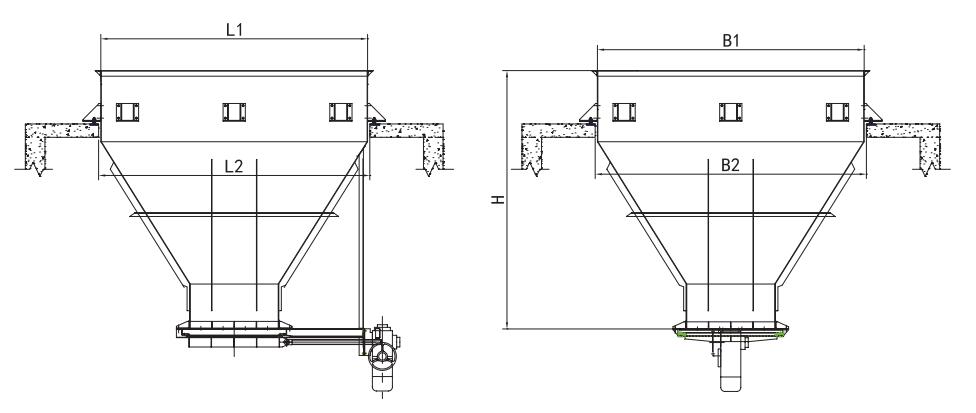


| Model | Size | QBND2 | QBND3 | QBND5 | QBND10 | QBND15 |
| capacity (m3) | 2 | 3 | 5 | 10 | 15 | |
| Overall dimensions | L1 (mm) | 1600 | 2100 | 2600 | 2800 | 3000 |
| B1 (mm) | 1600 | 2100 | 2600 | 2800 | 3000 | |
| H (mm) | 1900 | 1900 | 2300 | 2800 | 3000 | |
| Civil dimensions | L2 (mm) | 1640 | 2140 | 2640 | 2840 | 3040 |
| B2 (mm) | 1640 | 2140 | 2640 | 2840 | 3040 |


Just say hello and we'll start a fruitful collaboration. Start your own success story.
The sludge hopper is a key working equipment in the sludge treatment system and plays an important role in the sludge dehydration and transportation links. Its core function is to collect the mud cake produced in the dehydration room and store it in the hopper. In the operation of the sewage treatment plant, the moisture content of the sludge treated by dehydration equipment such as filter presses and centrifuges will be reduced to form mud cakes. At this time, the sludge hopper becomes the hub connecting the dehydration process and the transportation link.
From the perspective of appearance design, the sludge hopper is usually designed as an inverted cone or square cone box structure. This shape can not only effectively receive materials, but also make the materials fall naturally through gravity. The double-leaf door structure at the bottom is the core control component. The two symmetrically distributed metal doors are connected to the hopper body through hinges. When closed, they can form a closed storage space for storing materials.
With the gradual improvement of environmental protection requirements, modern sludge hoppers have gradually integrated Internet of Things technology to monitor the material level status in real time, providing support for intelligent management of sludge treatment. This equipment, which combines storage, transportation and intelligent control functions, has significantly improved the efficiency of sludge disposal and has become an indispensable part of modern sewage treatment plants.